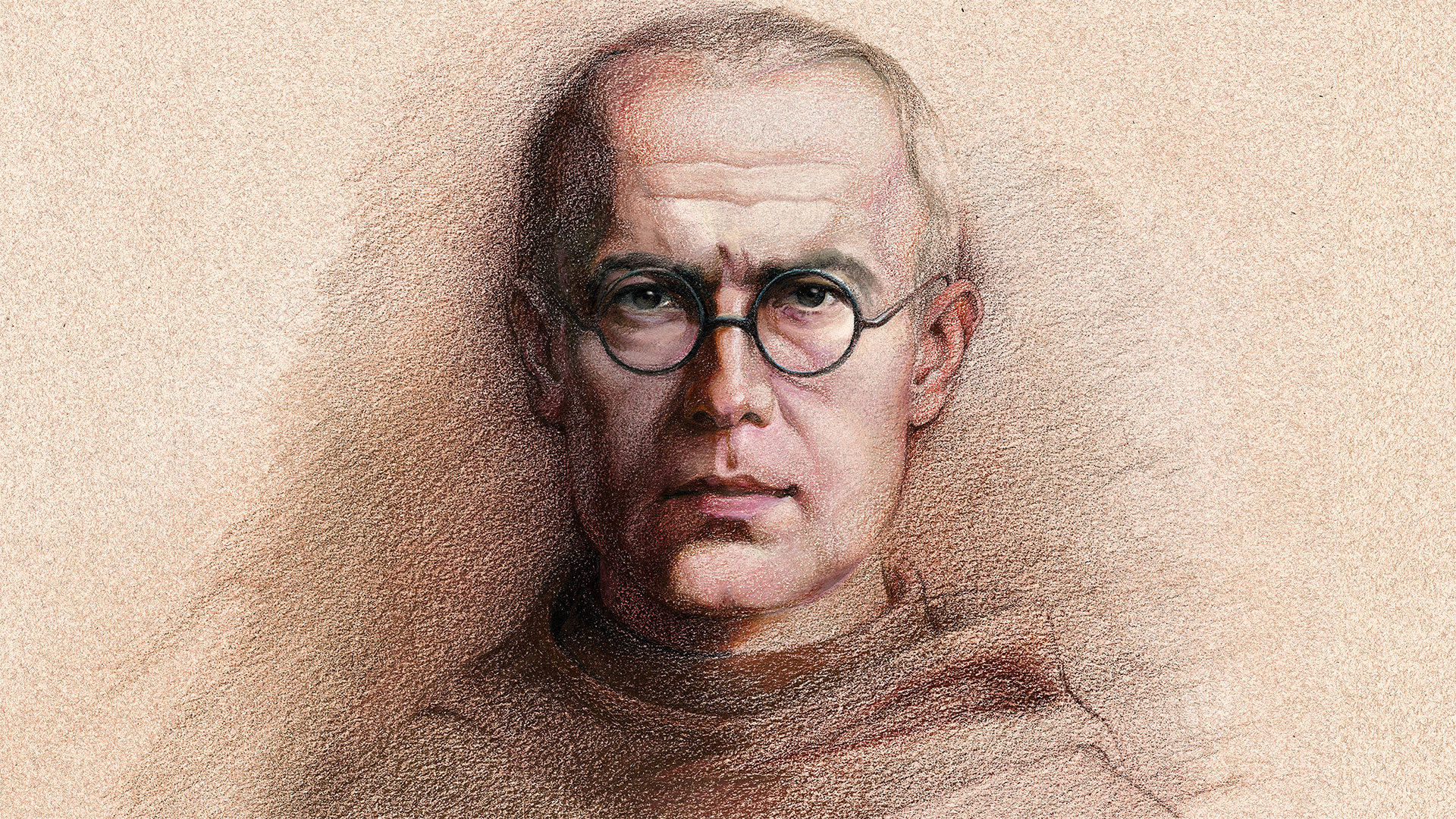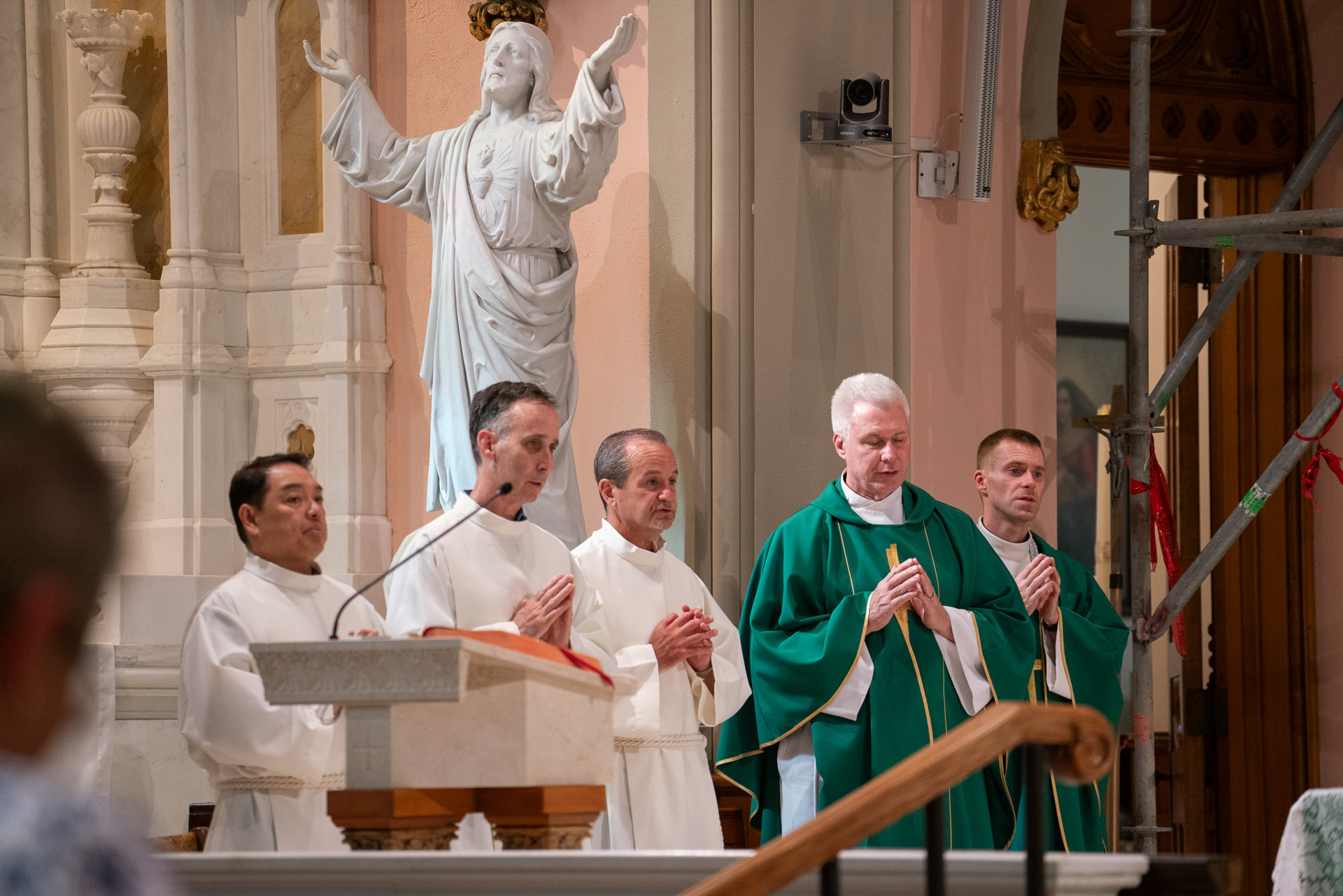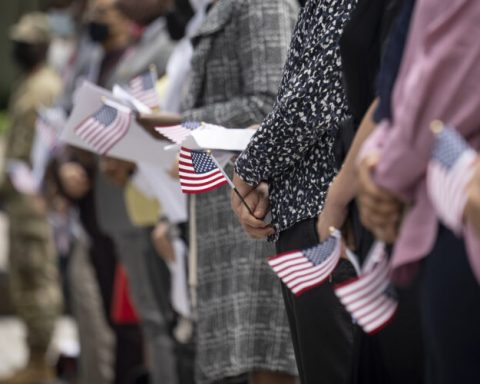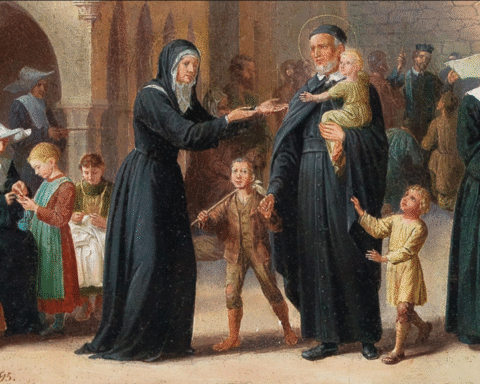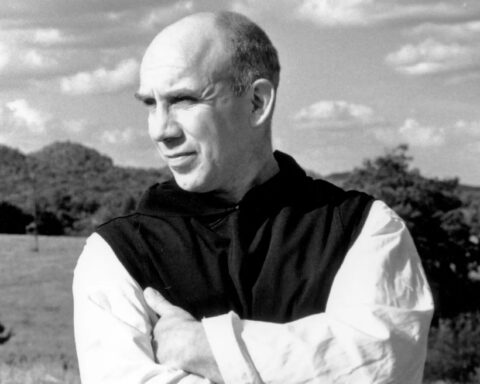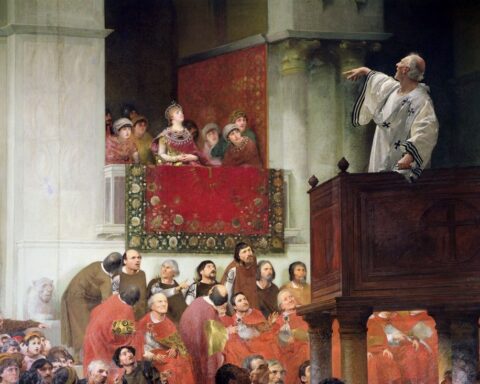On Aug. 14, 1941, Saint Maximilian Kolbe died a martyr in the German death camp of Auschwitz. Two weeks earlier, Kolbe had volunteered to trade places with another man who was part of a group chosen to face death by starvation as a warning against attempted escapes. Kolbe endured two weeks of dehydration and starvation, throughout which he maintained calm and led the other prisoners in prayer. When he was the last of the group still alive, the guards gave him a lethal injection of carbolic acid to end his life.
We celebrate the Feast Day of Saint Maximilian Kolbe on Aug. 14, commemorating his heroic sacrifice. Then, on Aug. 15, we celebrate the Feast of the Assumption of the Blessed Virgin Mary, whom Kolbe had a strong devotion to from a young age. As a child, Kolbe had a vision of Mary, later recounting, “I asked the Mother of God what was to become of me. Then she came to me holding two crowns, one white, the other red. She asked me if I was willing to accept either of these crowns. The white one meant that I should persevere in purity, and the red that I should become a martyr. I said I would accept them both.”
This pledge formed the basis for Kolbe’s entire life. He entered the seminary at a young age and was ordained a priest in 1918 at the age of 24. Before he was even ordained, Kolbe founded the Militia Immaculata after witnessing virulent anti-Catholicism on the streets of Rome while studying to become a priest. The aim of the organization was to encourage Catholics to turn to the intercession of our Blessed Mother to counter errors and convert souls to Christ. Of his devotion to Mary, he later declared, “Never be afraid of loving the blessed Virgin too much. You can never love her more than Jesus did.”
Click here to subscribe to our weekly newsletter.
After his ordination, Kolbe returned to his home country of Poland, where he promoted consecration and entrustment to the Immaculate Virgin Mary and turned the Niepokalanow Monastery into a center for publishing, which it remains to this day.
In fact, Kolbe’s legacy is one of the most amazing things about his story because the guards in that death camp certainly thought they were extinguishing him when they took his life. However, as Early Church Father Tertullian said, “The blood of the martyrs is the seed of the Church,” and that is certainly true of Kolbe, who brought such good into the world—and that good continues to flourish.
At Niepokalanow, Kolbe published “Knight of Immaculata,” a periodical still in print thanks to the efforts of the Militia Immaculata, which today boasts three million members in 48 countries worldwide. He even went to Japan and India for a time and founded a monastery that remains an important center of Catholicism in Japan.
But it is the lives Kolbe saved that are his most enduring legacy. Amid the destruction of World War II, he became one of only four brothers remaining at the Niepokalanow Monastery, where he opened a temporary hospital, sheltered refugees, and hid 2,000 Jews from German persecution.
His martyrdom was the crowning self-sacrifice for God in a lifetime devoted to love, charity, and defense of all that is good and true. May he intercede for us all to lead lives of devotion to God and to be seeds of the faith in our own small ways.
For free copies of the Christopher News Note SAINTS: PAST, PRESENT, FUTURE, write: The Christophers, 264 West 40th Street, Room 603, New York, NY 10018; or e-mail: mail@christophers.org
